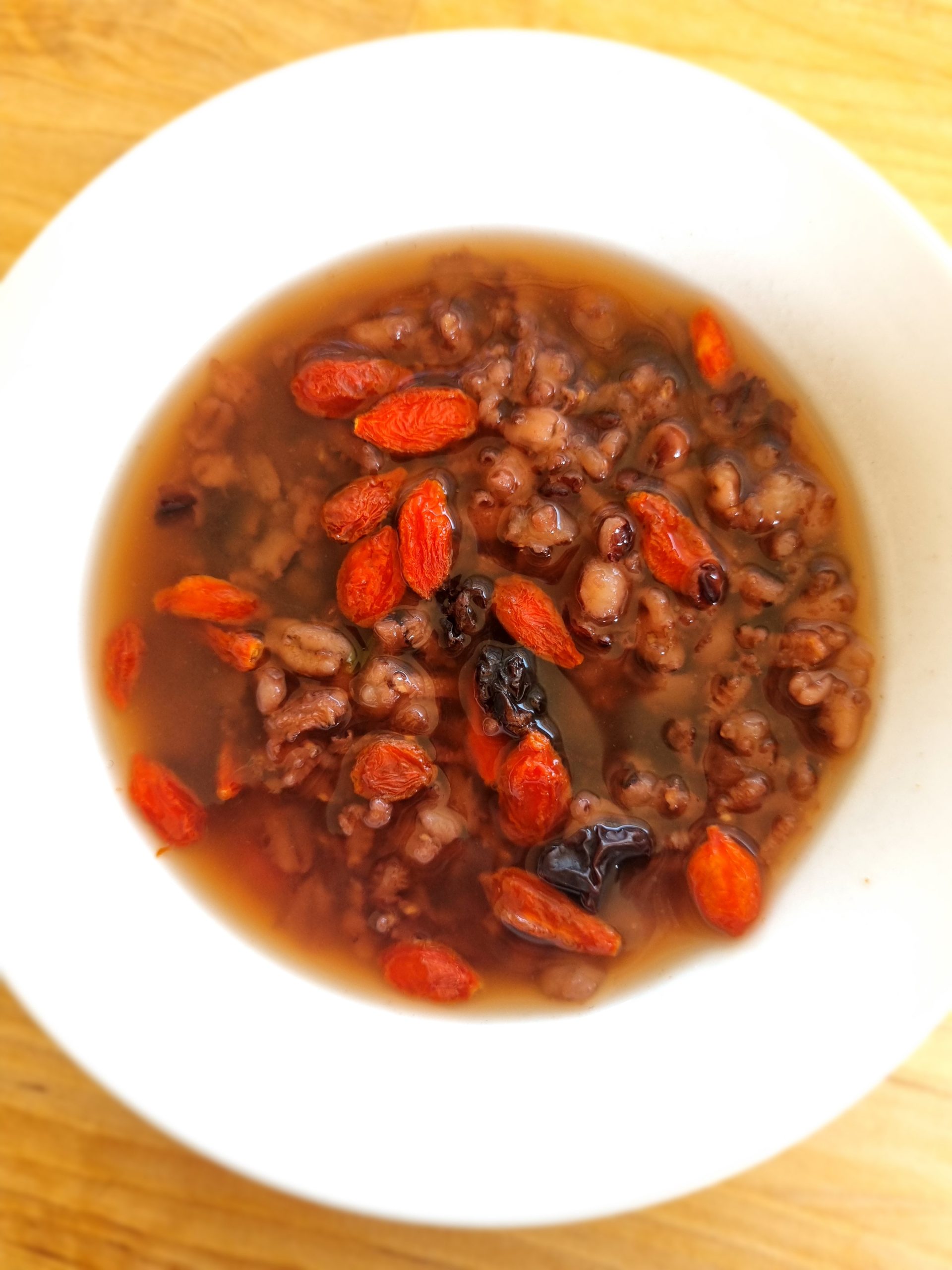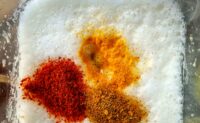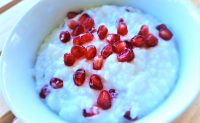Laba Congee (腊八粥 Laba Zhou)
Eyal Shpringer

Laba Congee is a warming porridge eaten in China during the cold times of the year, especially during the Laba Festival. The name “Laba” refers to the date, 8.12, which is the official date of the festival according to the Chinese lunar calendar. There are many explanations for why this congee is consumed during this time of the year, one of which refers to celebrating the day of Bodhi when the Buddha attained enlightenment.
The Chinese attribute immune-boosting and warming properties to Congee, which results from prolonged cooking and enrichment with a variety of grains, dried fruits, nuts, and herbs. The abundance of food items, herbs, and spices used to make the congee is somewhat reminiscent of eight-grain rice, another important dish at this time of the year.
Ingredients:
1/3 cup sticky rice/sushi rice/rice for risotto
1/3 cup black rice (not wild rice)
1/3 cup pearl barley
1/3 cup azuki beans
1/3 cup black beans
1/3 cup dried lotus seeds (Lian zi) available at herbal medicine stores
1/3 cup black raisins
10 Chinese dates (Da Zao) pitted and sliced.
Preparation:
Soak the grains and legumes overnight or for at least 6 hours.
Remove the soaking water and place the grains, legumes, nuts, and non-fruit herbs in a large pot, covering with water at least twice the volume of the raw materials.
Gently boil, add a pinch of salt, cover, and cook for about 6 hours on low heat. You can also use an electric rice cooker. Stir occasionally to prevent the porridge from sticking to the bottom, and add water if necessary to maintain a liquid texture.
About half an hour before serving, add dried fruits and herbs.
Other options:
- You can add or replace some grains with millet, whole rice, or Job’s tears (available at herb stores).
- When spring arrives, use legumes that are more suitable for spring, such as mung beans, soybeans, and black-eyed peas.
- Add nuts and toppings such as peanuts, walnuts, almonds, pine nuts, goji berries, dried longan fruits (Long yan rou), or Chinese lily bulbs (Bai he). All these herbs can be purchased at herb stores.
- Season the dish with cinnamon, nutmeg, and dry ginger for additional warming, and Qi and Yang-supporting effects.
- Add strengthening herbs such as Astragalus (Huang qi), Codonopsis (Dang Shen), Korean Ginseng (Ren Shen), boiled Rhemania (Shu di huang), and other sweet-flavored herbs.
Laba Congee From the Perspective of Traditional Medicine
The therapeutic quality of Congee is moist, warm, and slightly heavy. The dominant taste is sweet. Thus, Laba congee is suitable as a rich and nourishing winter food and for balancing dry and cold conditions as long as it is eaten without burdening the digestive system.
Congee Laba is suitable as a warm and stabilizing food for cold and dry-constitute patients or conditions characterized by insomnia, anxiety, thinness, and frailty.
It should be noted that this dish is not suitable as a primary food for patients with a damp or hot constitution, especially when those are manifested as overweight and diabetes.
Eyal Shpringer is a Chinese medicine practitioner and a clinical herbalist specializing in Chinese nutrition and traditional nutritional approaches. Eyal holds a master’s degree in research of East Asian medicines. Since 2007, he has been teaching a postgraduate training program in Chinese and oriental nutrition according to the TEF method and other courses and workshops for practitioners. Eyal co-authored the bestselling book “Cooking for Life: A Traditional Nutrition Cookbook for Cancer Patients” (Hebrew).
Did you find the recipe interesting? Do you want to continue studying with me?
You are invited to join me on my Instagram page and the Traditional Nutrition and Medicine Facebook group.

